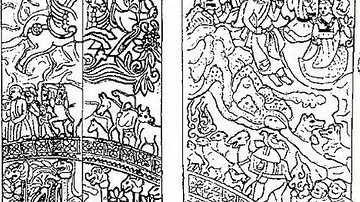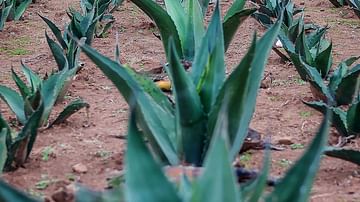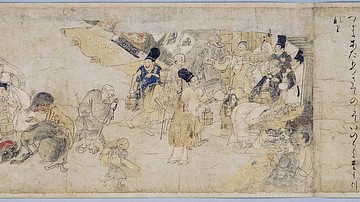Search
Did you mean: Delos?
Search Results

Definition
Chinvat Bridge
The Chinvat Bridge is the span between the world of the living and the afterlife in the ancient Persian religion of Zoroastrianism. It is also known as Cinvat Bridge, Cinvad Bridge, and Chinvato Peretav. Every soul, after death, was thought...

Definition
Tarquinia
Tarquinia (Etruscan name: Tarch'na or Tarch, Roman name: Tarquinii) is a town located on the western coast of central Italy which was an important Etruscan and then Roman settlement. It is famous today as the site of around 200 Etruscan tombs...

Definition
Pulque
Pulque is an alcoholic drink which was first drunk by the Maya, Aztecs, Huastecs and other cultures in ancient Mesoamerica. Similar to beer, it is made from the fermented juice or sap of the maguey plant (Agave americana). In the Aztec language...

Definition
Bhubaneshwar
Bhubaneshwar (also spelt Bhubaneswar, Bhubanesar, and Bhuvanesvar) is a city located in the Orissa district of north-eastern India and flourished as a centre of Hindu worship from the 7th century CE. Its mass of well-preserved sandstone temples...

Video
Iranian/Persian Mythology, Part I, Ahriman, Zoroaster, Ahura Mazda, Mithras, Vayu, Tishtar, Apousha
Fereydoun Kian,(2009) Global Education Va, Vayu, Apousha, Tir, Tishtar, Nas, Nasa, Nasu, Dorooj, these are some of the Iranian Demons in ancient times and they all got incorporated during Sassanid into Zoroastrian texts by the Zoroastrian...

Video
Mesopotamia - The Sumerians
Gardens of Babel - The Sumerians
La Cinquième 2001

Book Review
Trafficking with Demons: Magic, Ritual, and Gender from Late Antiquity to 1000
Martha Rampton’s two primary goals with this book were to define in specific terms what “magic” meant and to examine how that meaning changed over time. She divides the book into four parts, with the last three focusing on specific time periods...

Article
Medicine in Ancient Mesopotamia
In ancient Mesopotamia, the gods informed every aspect of daily life including the practice of medicine. Gula, the Sumerian goddess of healing, presided over the medical arts, guiding doctors and dentists in the treatment of health problems...

Article
Etruscan Tomb Paintings
The Etruscans flourished in central Italy from the 8th to 3rd century BCE, and one of their greatest legacies is the beautifully painted tombs found in many of their important towns. Tarquinia, Cerveteri, Chiusi, and Vulci, in particular...

Article
Ghosts in Ancient China
Ghost stories were the earliest form of literature in ancient China. They were almost certainly part of a very old oral tradition before writing developed during the Shang Dynasty (1600-1046 BCE) and they continue to be popular in China today...